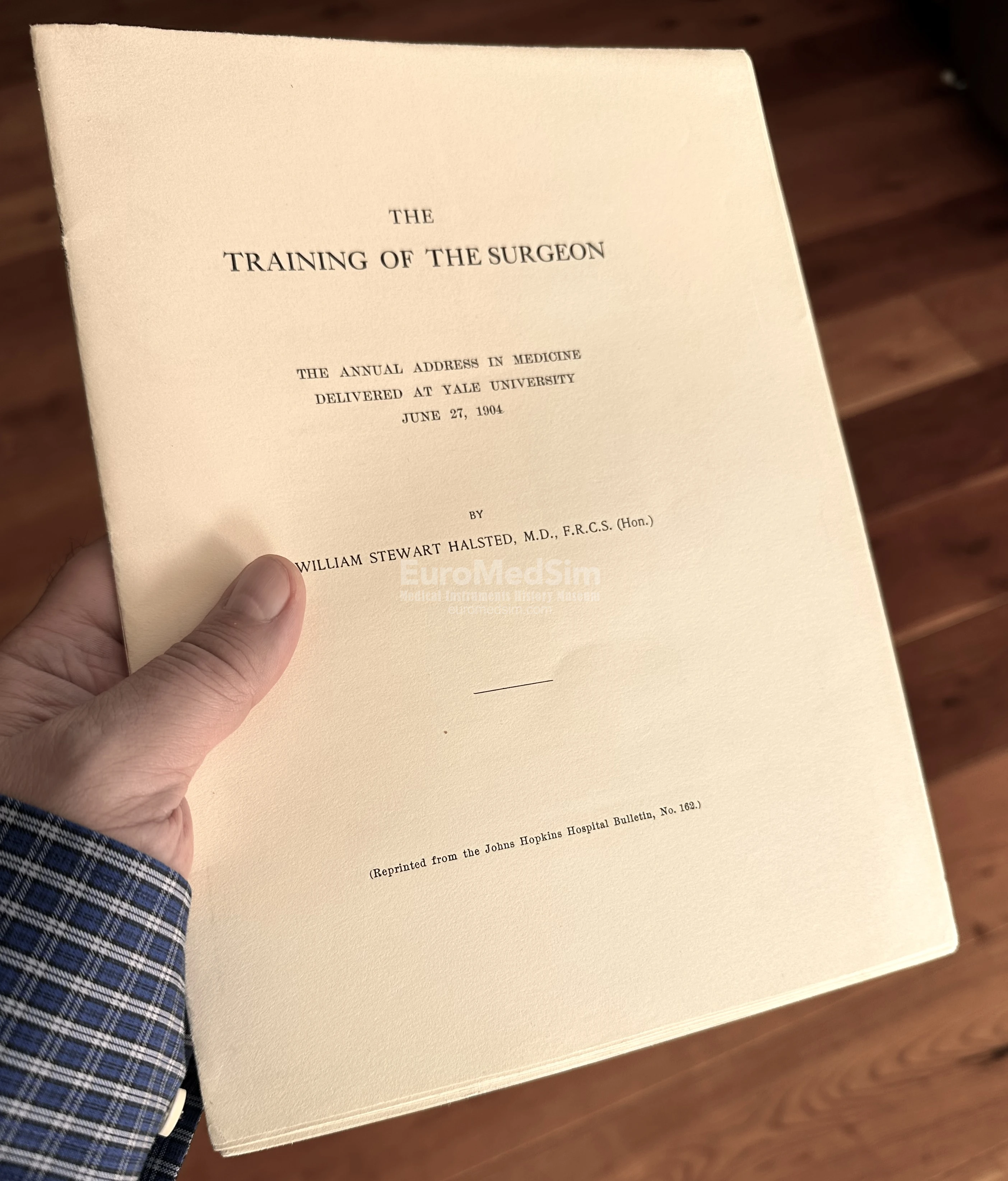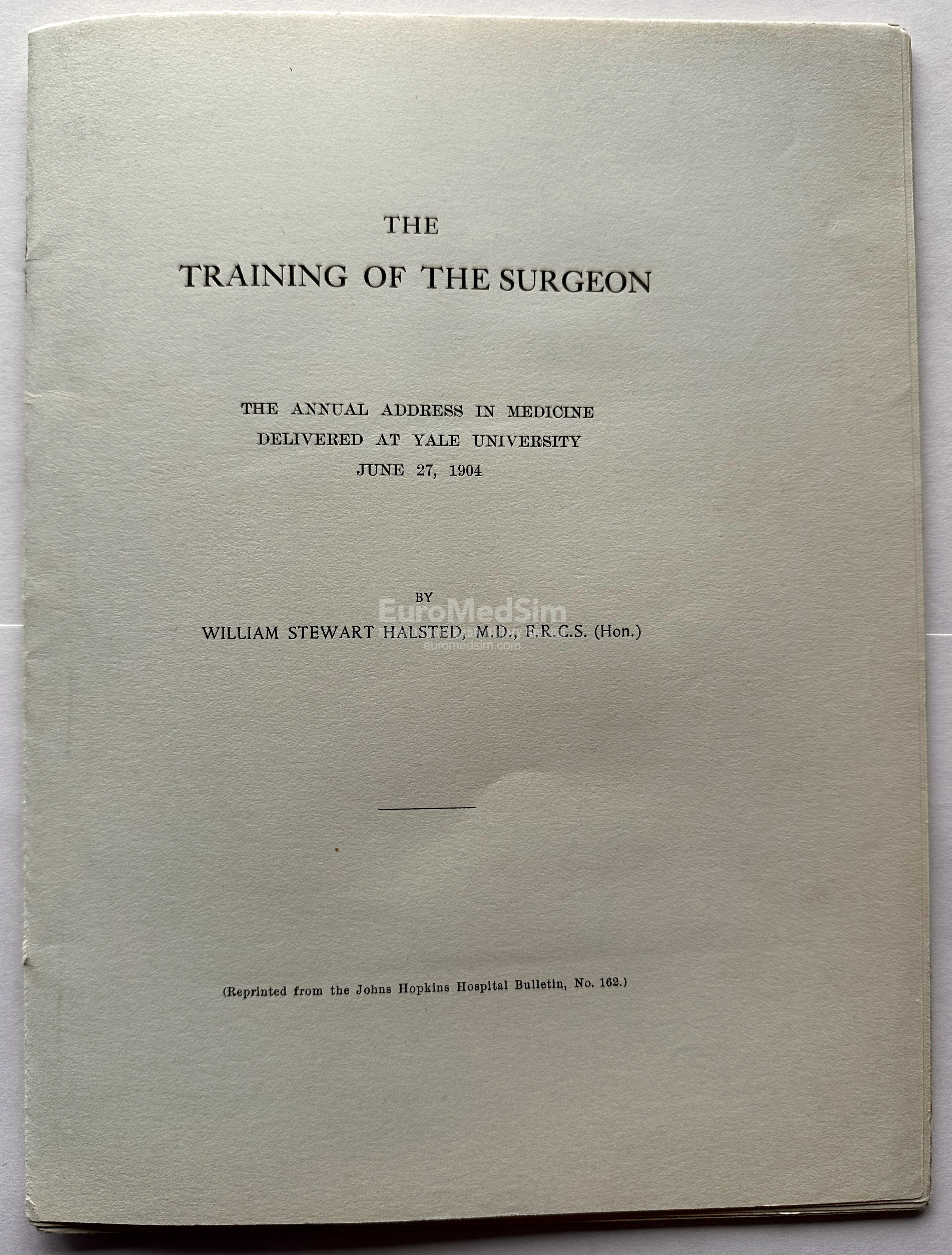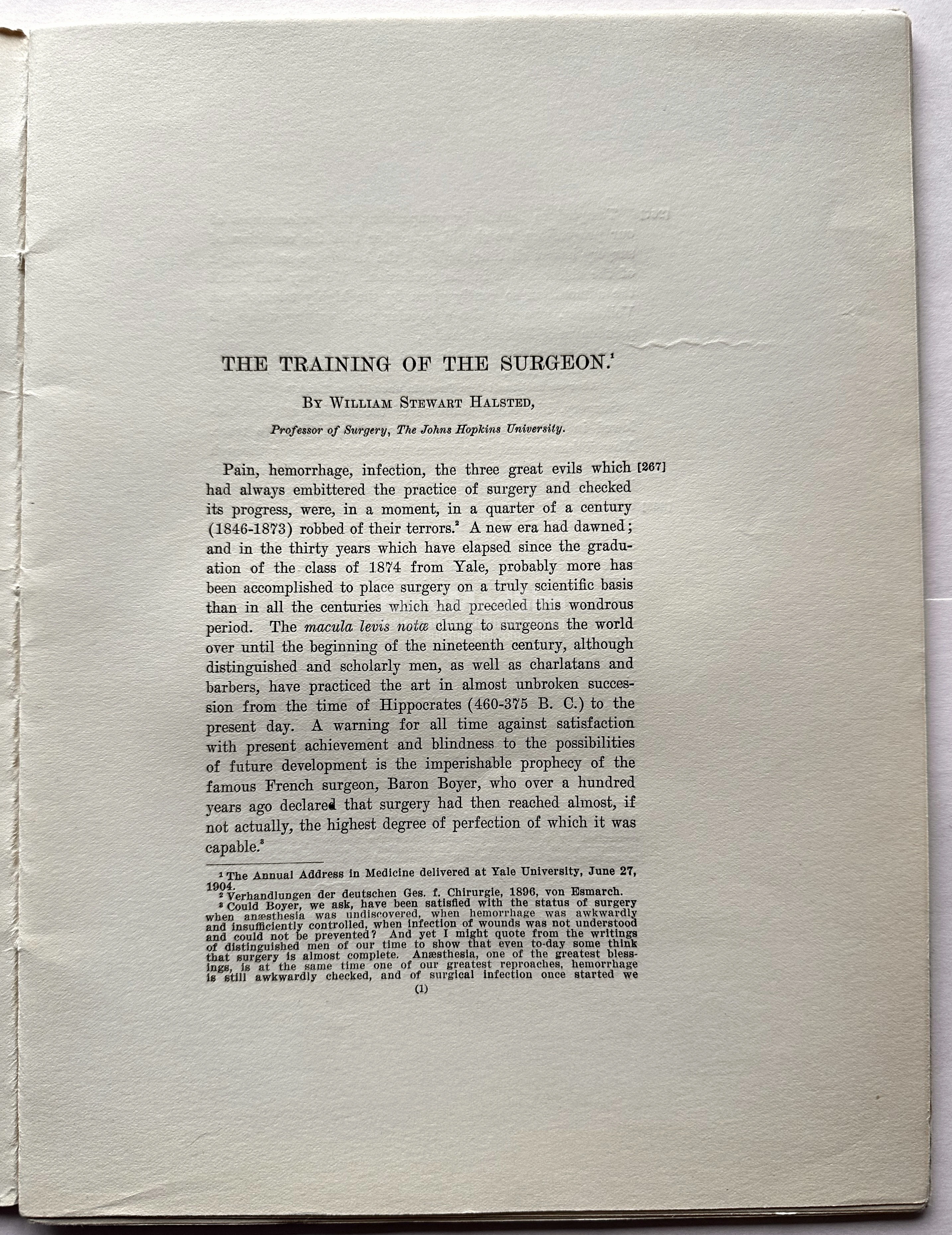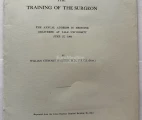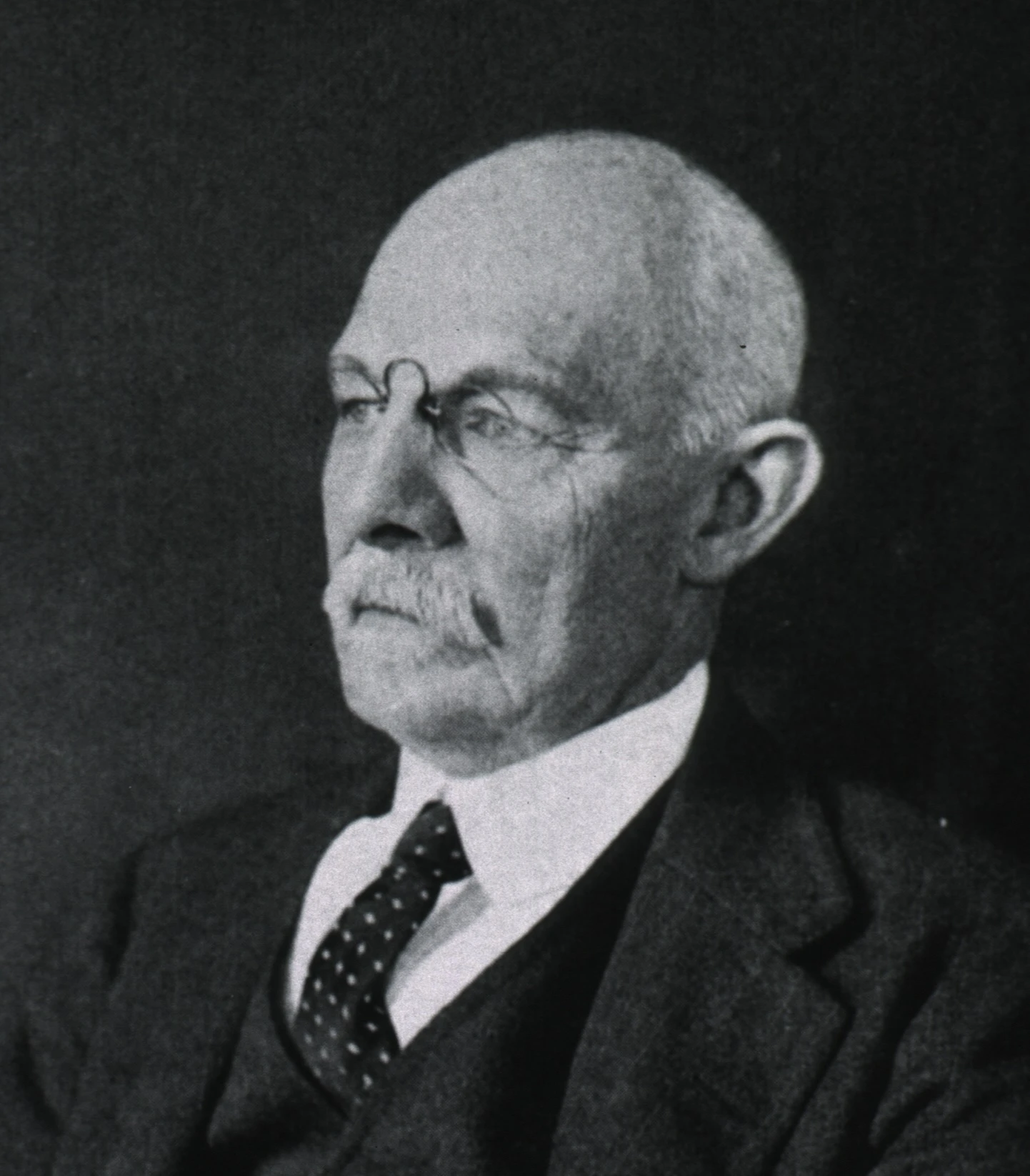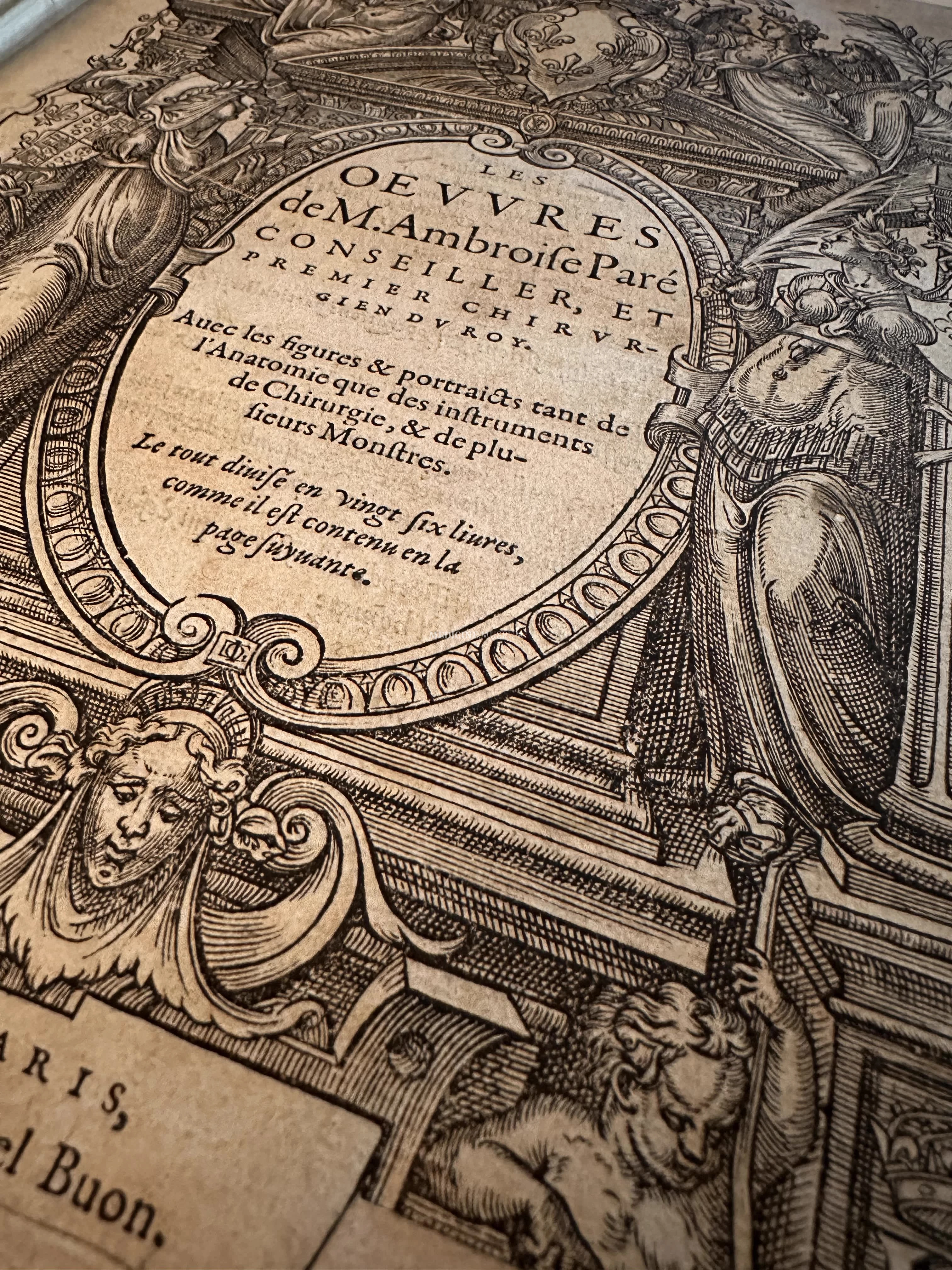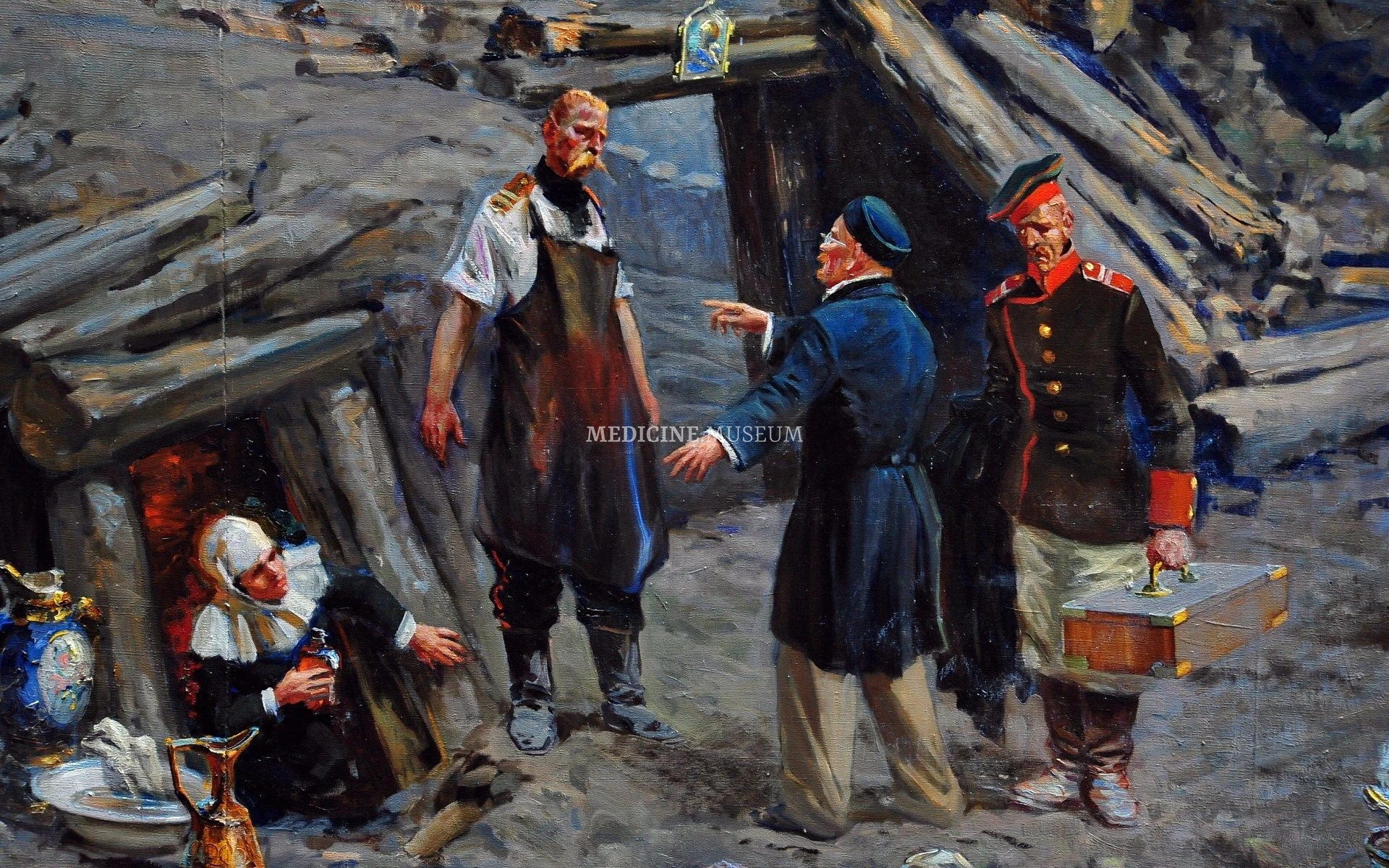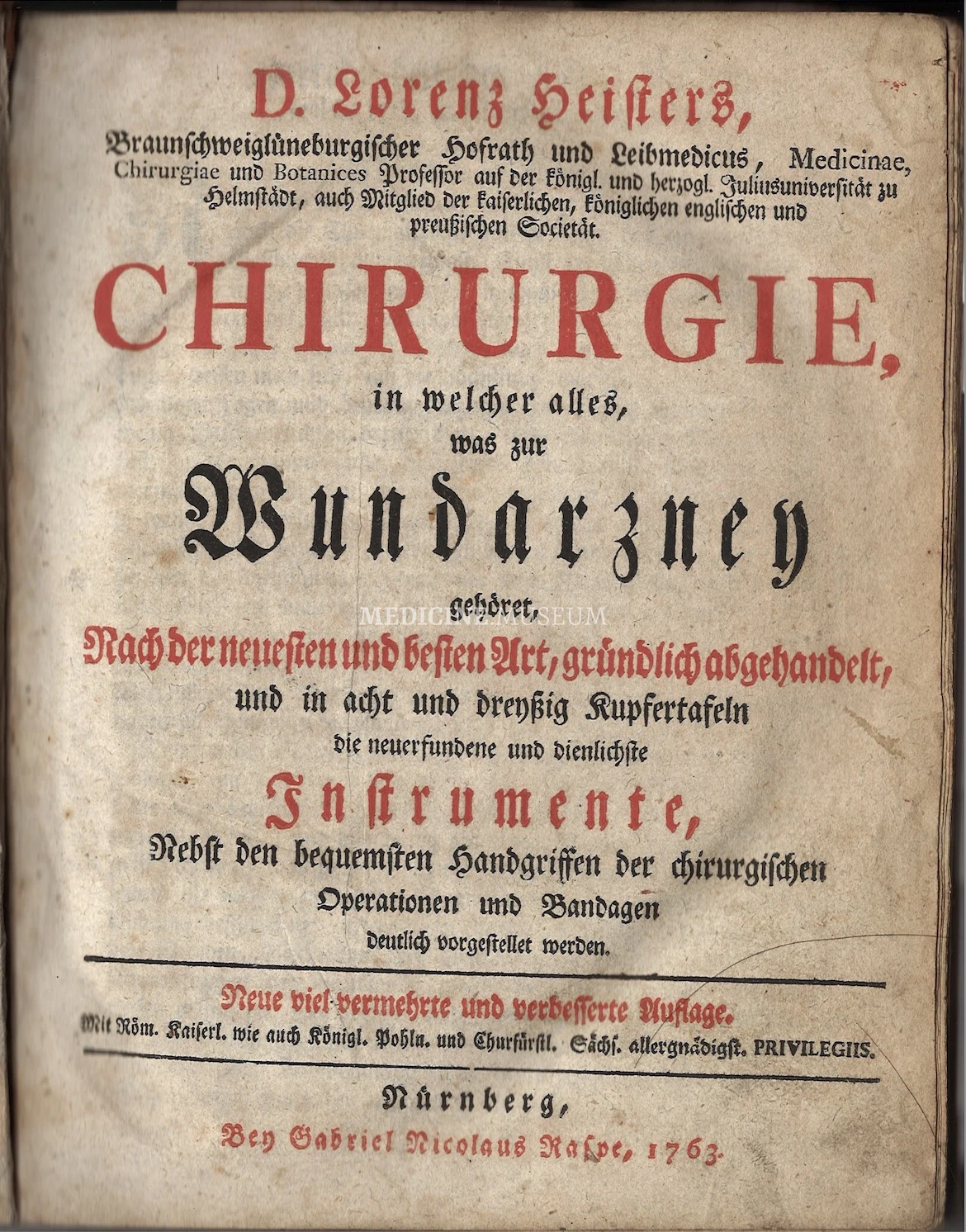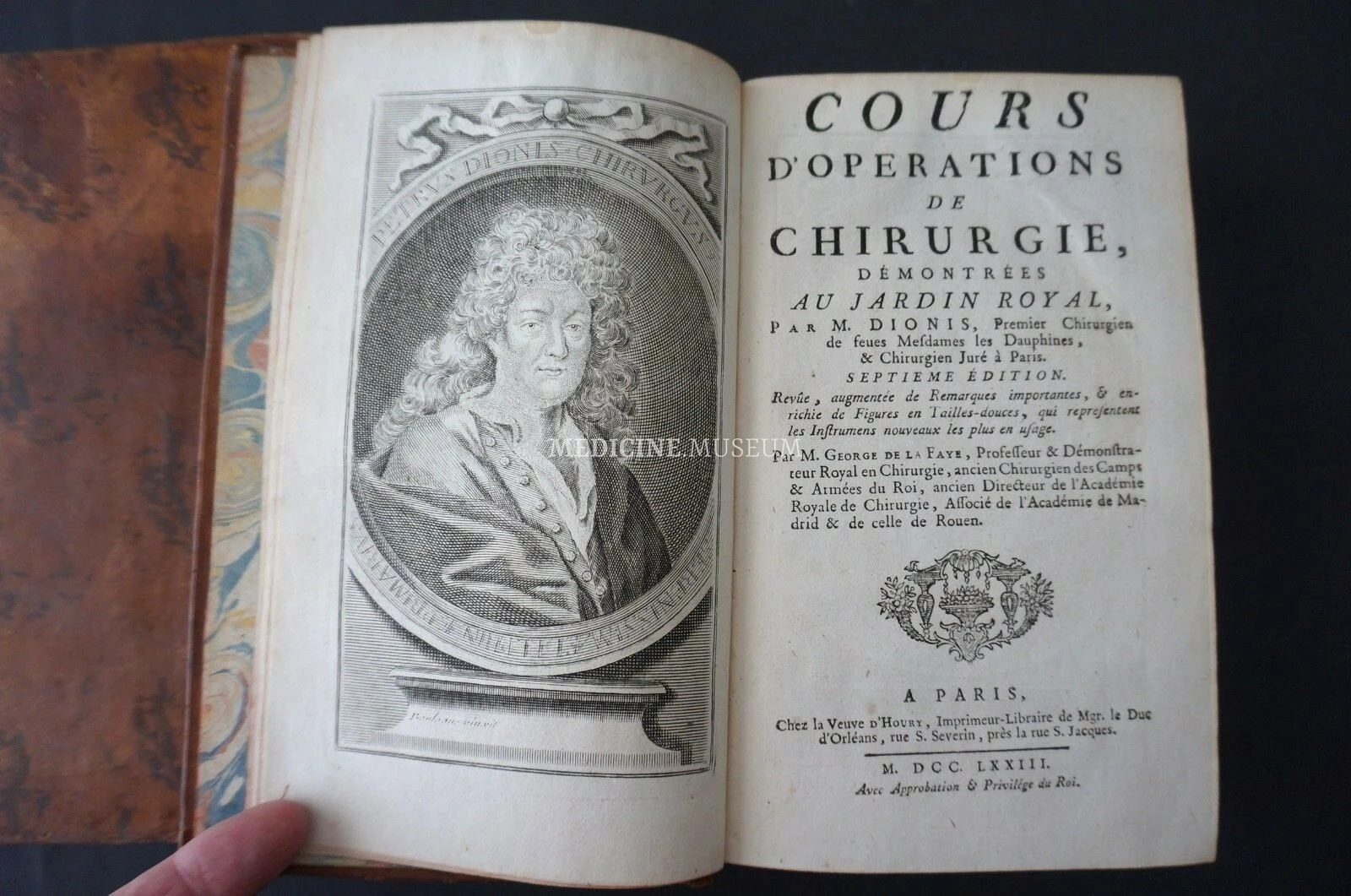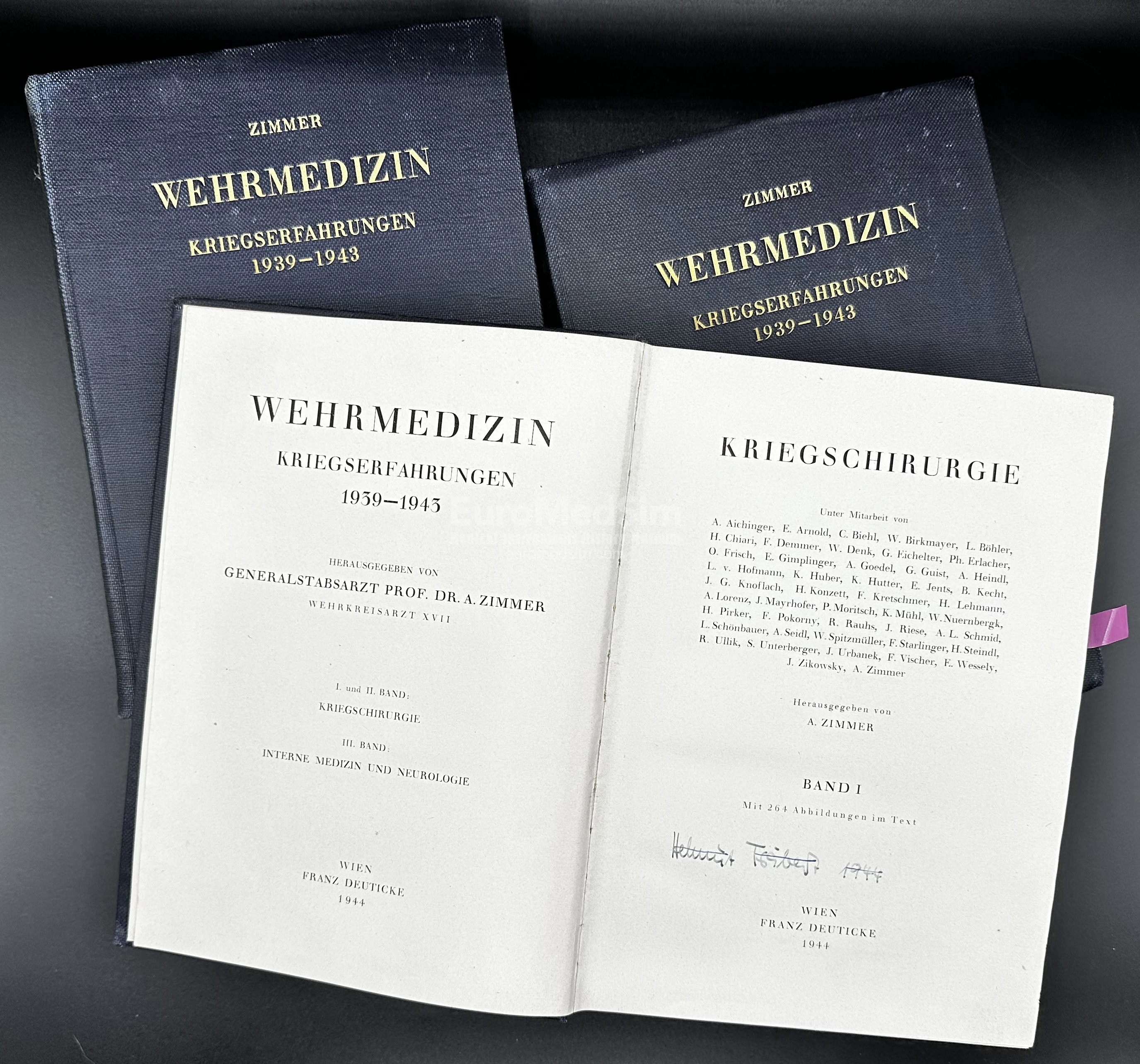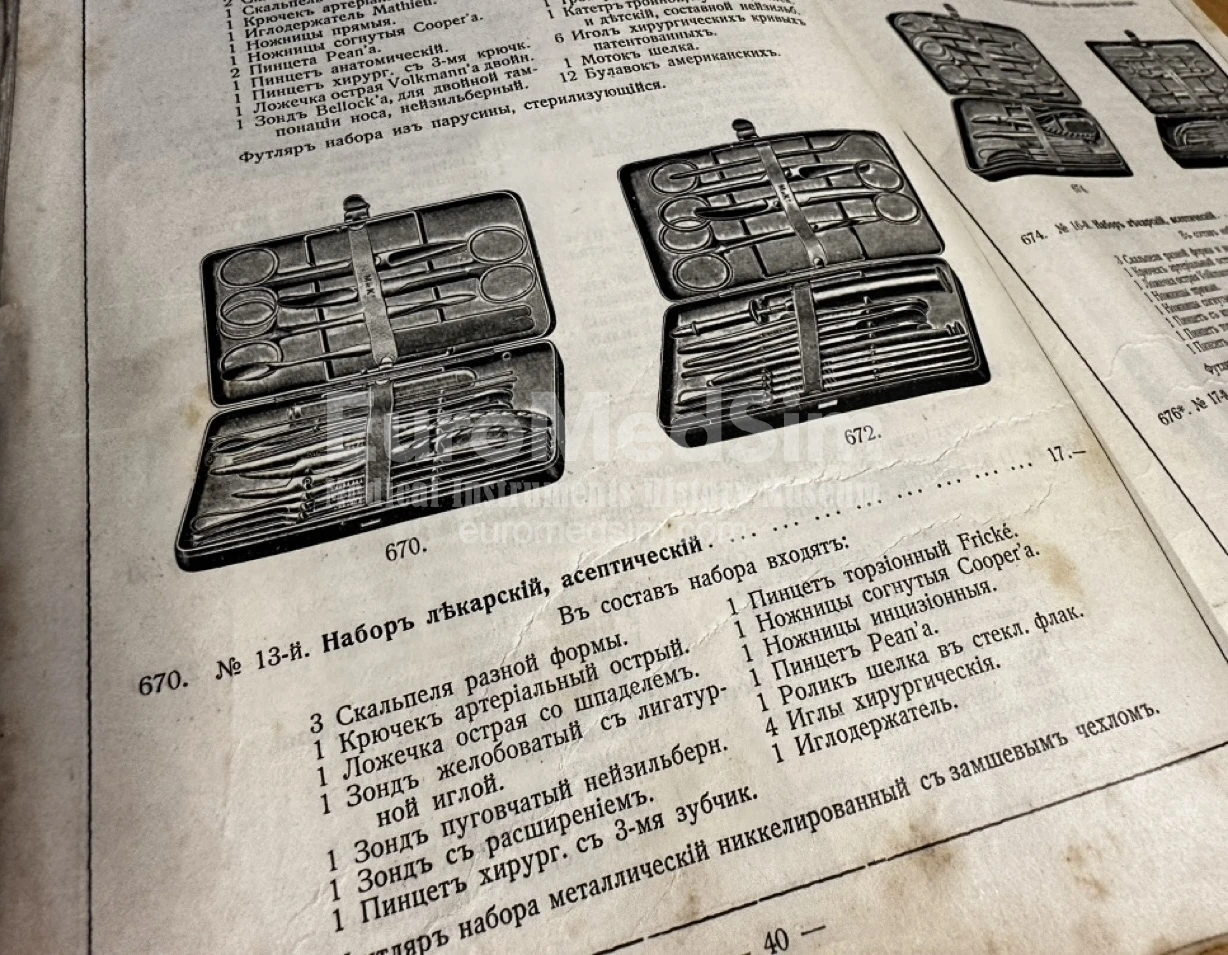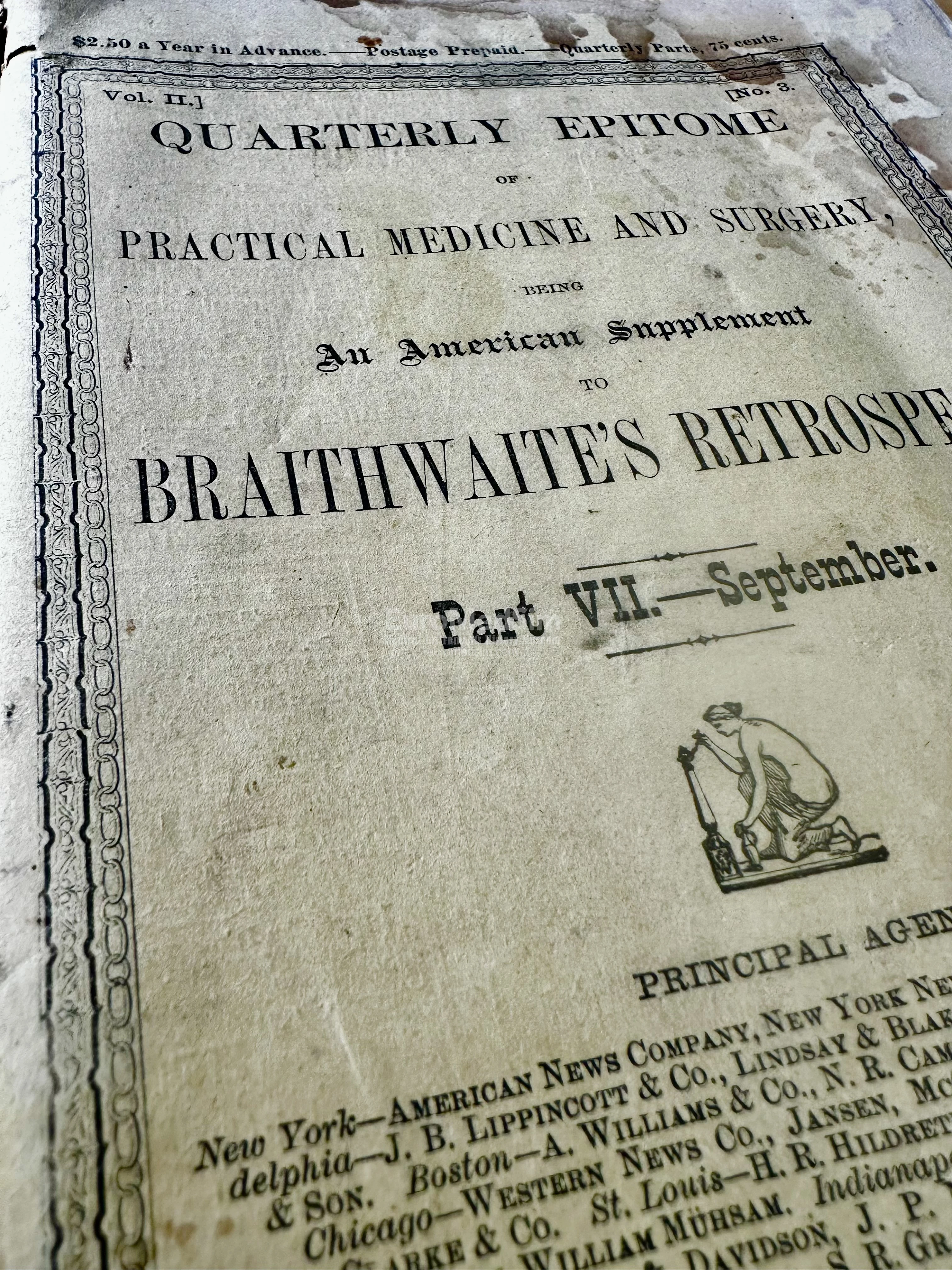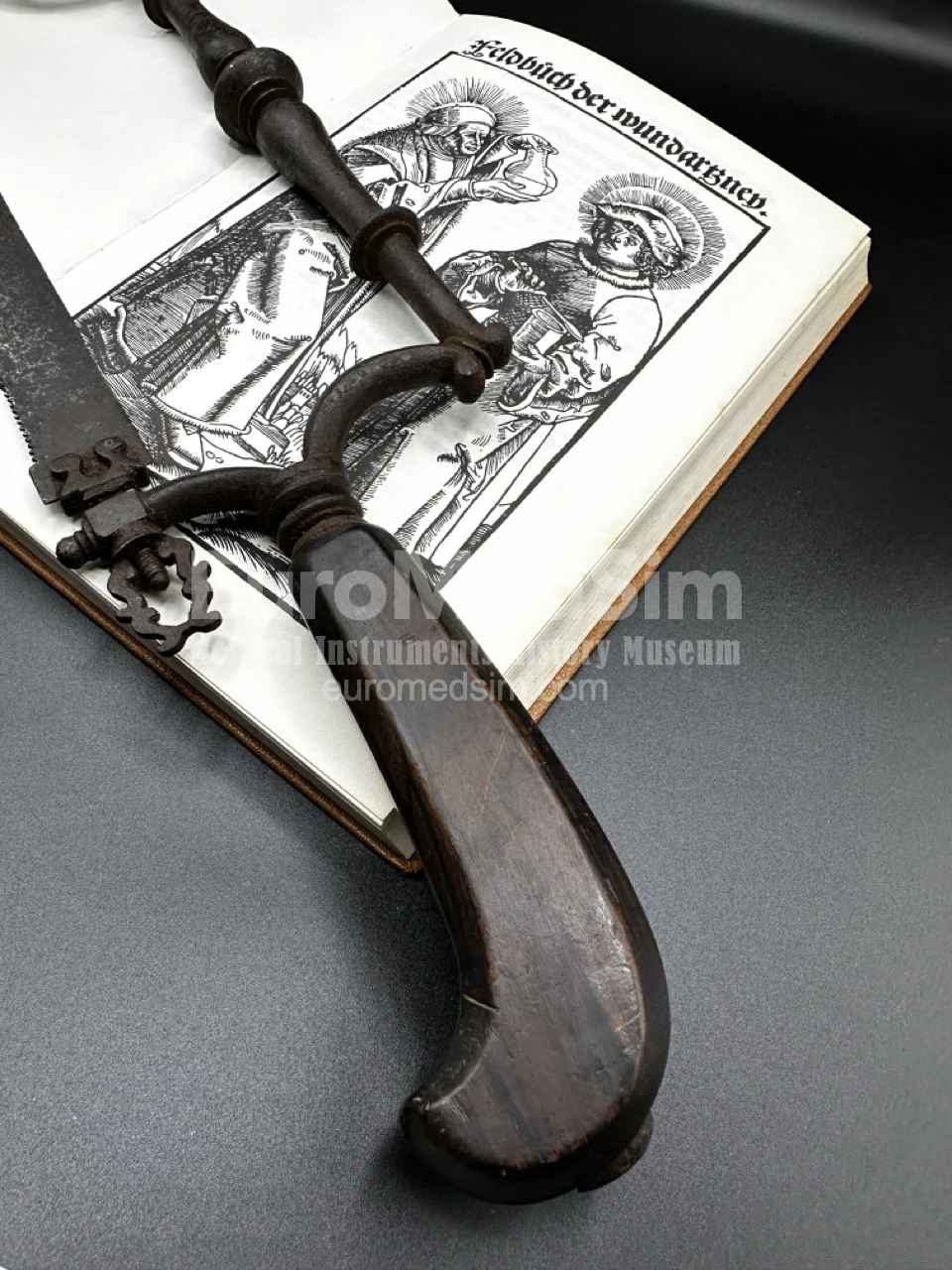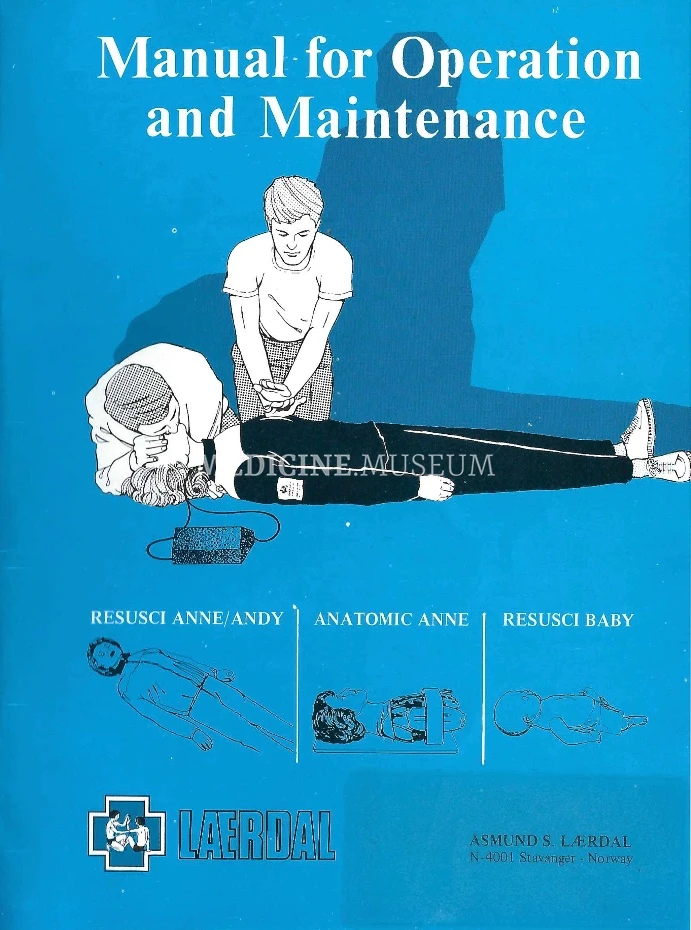The Training of the Surgeon, Yale Address 1904
The training of the surgeon : the annual address in medicine delivered at Yale University, June 27, 1904 / by William Stewart Halsted
The training of the surgeon : the annual address in medicine delivered at Yale University, June 27, 1904 / by William Stewart Halsted. The first edition. This lecture emphasized that surgical skill must be built through rigorous, systematic training rather than quick apprenticeship. He argued for long, carefully supervised residency programs, where surgeons-in-training would gradually assume responsibility while mastering both technical skill and scientific inquiry. This lecture laid the foundation for the modern surgical residency system in the United States.
Essay
William Stewart Halsted’s 1904 Yale address “The Training of the Surgeon” emphasized that surgical skill must be built through rigorous, systematic training rather than quick apprenticeship. He argued for long, carefully supervised residency programs, where surgeons-in-training would gradually assume responsibility while mastering both technical skill and scientific inquiry. This lecture laid the foundation for the modern surgical residency system in the United States.
Halsted begins by recalling his medical education, when he “believed [his teachers] represented all that was most advanced in medicine.” But “a day in Halle… was a revelation.” In Germany, he witnessed a remarkable depth of experience—“one surgeon alone reported on six hundred cases, more or less… most of which he had been able to follow” for decades. By contrast, in America “only one of the surgeons had had an experience of as many as twenty-eight cases.” The difference, he explains, lay not just in knowledge but in “the audience,” for in Germany “its halls at each Congress are filled and overflowing,” while the American surgical society was “limited to twenty.”
From this contrast, Halsted draws inspiration rather than despair. He acknowledges that “the times are changing,” that the United States has already begun to see “how superior in all respects is the endowed university medical school to the old-time proprietary school.” He takes heart that “we now have… several moderately well-endowed medical schools with a university connection,” and he calls for these new institutions—“unhampered by traditions and provided with adequate endowment”—to lead reform.
His hopes are ambitious and constructive: to build “a system… which will produce not only surgeons but surgeons of the highest type, men who will stimulate the first youths of our country to study surgery.” He insists that “the medical school should control a hospital of its own” to ensure close integration of teaching and clinical practice, and that “the surgeon must operate every day and always,” combining constant practical experience with research and teaching.
Finally, Halsted envisions a future where “with a fixed salary the surgeon may devote himself to the work of his choice,” whether clinical, educational, or investigative. His faith in reform is clear: through university-based hospitals, sustained surgical practice, and rigorous training, America can produce surgeons who “will devote their energies and their lives to raising the standard of surgical science.”
"When The Johns Hopkins Hospital first opened, a young surgeon from New York, William S. Halsted, M.D., was chosen as the first surgeon-in-chief, Halsted laid the foundation for surgical training as we now know it in the United States. In an address on the 'Training of the Surgeon' presented at Yale in 1904 [presented here], Halsted said: 'We need a system and we will surely have it - which will produce not only surgeons, but surgeons of the highest type, who will stimulate the finest youths of their country to study surgery, and to devote their energies and their lives to raising the standards of surgical science.' Halsted founded a residency training program that dramatically changed the way surgeons were trained. Before Halsted, surgical training was a haphazard series of preceptorships without a definite end. Halsted believed that surgical training should be accomplished in a set period of time, have a progressive increase in responsibility and operative experience, and have a final period of independent activity. These important principles have been maintained at Johns Hopkins despite recent pressures to eliminate independent activity."
Quoting from W. G. MacCallum's biography of Halsted (1930): "Halsted often said that he found the greatest satisfaction of his life in the training of surgeons. Assuredly the successful careers as well as the devoted loyalty of so many of those who had the good fortune to be his pupils, assistants and resident surgeons and were proud to call themselves of the 'Halsted School' must have given him abundant cause of satisfaction. Dr. Halsted's story is that of a continuous enthusiastic effort to carry out in the hospital a plan which had formulated itself in his mind in the earlier years and which consisted in three things--to perfect the technical methods of surgery; to study experimentally and otherwise the several great topics which from the beginning had engaged his interest and, above all, to establish a school of surgery by training his assistants so thoroughly and through so long a time that they might leave him and transmit his teachings undiminished in other schools. It may seem that this is reasoning backward from the end result, but when one follows him through the years one cannot escape the conviction that all this was thought out early in his career. The third aim, the training of surgeons and the establishment of a school of surgery, was probably nearest his heart and it was by no means neglected in these early years. This necessarily depended upon his good judgment in the selection of the men who were to be his assistants and this seems to be attested by the success of many of the members of his staff whose names have become familiar in more recent times as distinguished surgeons" (W. G. MacCallum, William Stewart Halsted Surgeon, pp. x, 84, 94).
Full-text link
The Royal College of Surgeons of England, presented by the Wellcome Collection, London, UK: https://wellcomecollection.org/works/sap5h2ex
Condition report
25 pp. Original wrappers. Partly unopened. Near Fine. First Separate Edition.
Provenance
- Acquired from the Scientia Books, ABAA ILAB, Arlington, MA U.S.A. in 2025
